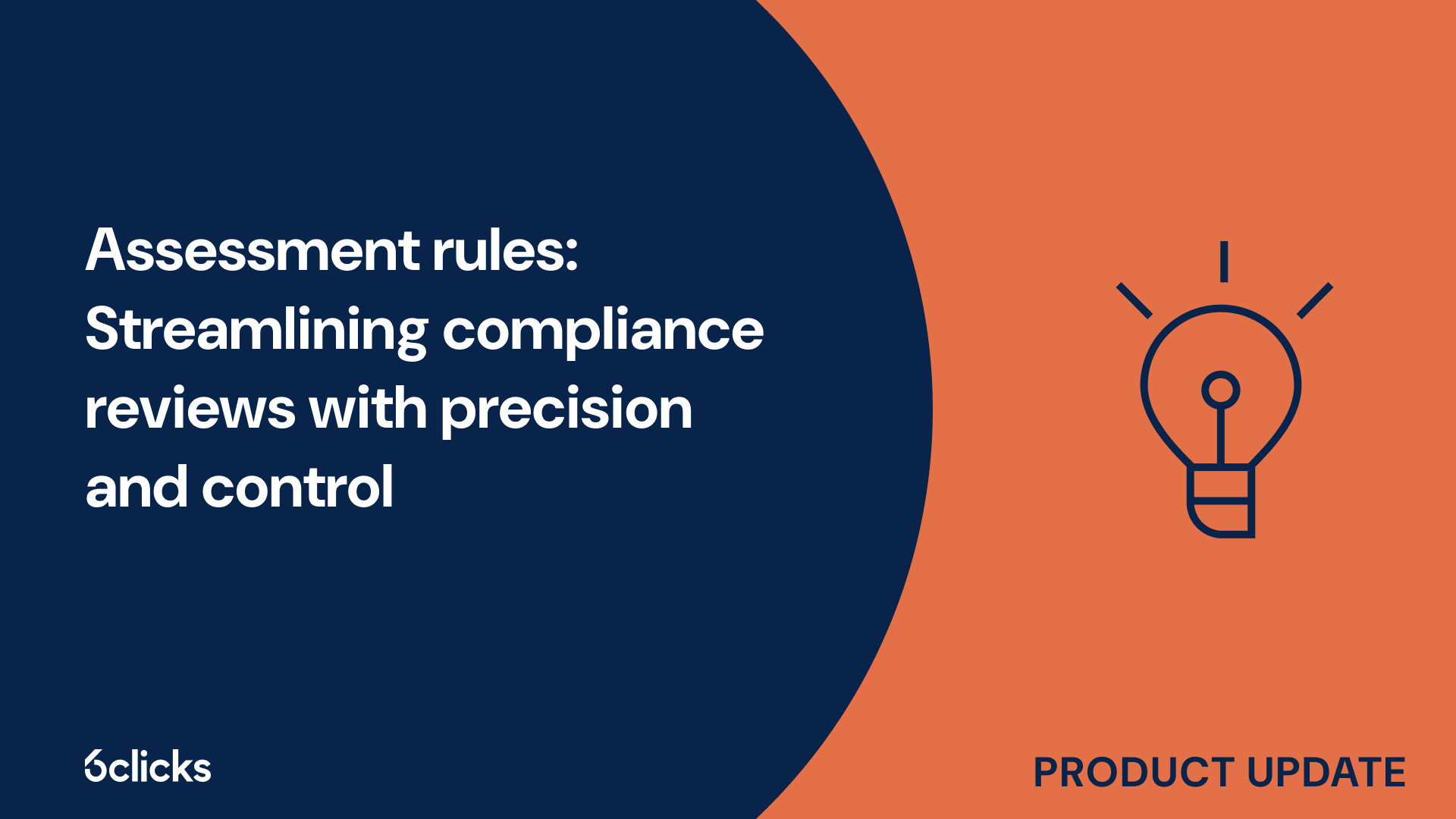The GRC buyer’s guide for 2025: Building resilience with AI-powered, federated solutions
Discover the ultimate GRC buyer's guide for 2025! Uncover how AI-powered, federated solutions transform compliance and security management for industries like government, aerospace, banking, and more. Learn about centralized control, continuous compliance, and advanced cyber GRC capabilities. Download now!
-1.png?width=200&height=249&name=Group%20193%20(1)-1.png)
The GRC buyer’s guide for 2025: Building resilience with AI-powered, federated solutions
History of APRA
The Australian Prudential Regulation Authority (APRA) was established in 1998 as part of financial reforms aimed at consolidating prudential oversight under a single authority. It replaced the Insurance and Superannuation Commission (ISC) and took over responsibilities for regulating banks, credit unions, insurers, superannuation funds, and friendly societies. The goal was to strengthen the regulatory framework and enhance the stability of Australia’s financial system.
APRA was created following recommendations from the 1996 Financial System Inquiry, which highlighted the need for streamlined oversight. The agency was tasked with maintaining the soundness of financial institutions, protecting consumer interests, and managing risks across the financial sector.
Expansion of powers and responsibilities
Since its formation, APRA's role has grown to address emerging challenges in the financial industry. Events like the collapse of HIH Insurance underscored the need for more robust regulation, leading to expanded supervisory powers. Today, APRA develops and enforces prudential standards, monitors risk management practices, and ensures institutions maintain sufficient capital and liquidity.
APRA's oversight has extended to private health insurers and other sectors, making it the central prudential regulator in Australia. Its role is critical in promoting stability, protecting consumers, and fostering confidence in the financial system.
Legacy and impact
APRA has significantly contributed to the resilience of Australia’s financial system by adapting to changes and risks over time. Its comprehensive supervision and enforcement activities ensure institutions operate soundly and safeguard depositors, policyholders, and superannuation members. By driving sound regulatory practices, APRA continues to protect stakeholders and support a competitive and stable financial sector.
APRA overview
The Australian Prudential Regulation Authority (APRA) is the prudential regulator of Australia's financial services industry. It oversees banks, credit unions, insurance companies, superannuation funds, and friendly societies. APRA's mission is to maintain financial system stability, protect consumers, and promote confidence by setting and enforcing prudential standards.
Role and responsibilities
APRA ensures financial institutions operate soundly and securely. Its key tasks include monitoring financial performance, enforcing compliance with regulations, and requiring institutions to maintain sufficient capital and liquidity to manage risks. APRA's prudential standards protect depositors, policyholders, and superannuation fund members while promoting confidence in the financial system.
Supervision and enforcement
APRA supervises institutions by analyzing regular reports on their financial health, risk exposures, and management practices. It identifies potential risks and takes action to address vulnerabilities, such as requiring institutions to strengthen their financial safeguards. APRA also enforces compliance with prudential standards, ensuring adequate insurance coverage, protection of deposits, and fulfillment of superannuation obligations.
Impact on the financial system
APRA plays a critical role in fostering a stable and competitive financial sector. By balancing regulation with industry growth, it encourages innovation while maintaining prudent risk management. This oversight contributes to consumer protection, economic resilience, and the long-term integrity of Australia’s financial system.
Objectives of APRA
The Australian Prudential Regulation Authority (APRA) operates with the following key objectives to ensure the stability, safety, and growth of Australia’s financial system:
Core objectives
- Maintain financial stability: Ensure financial institutions like banks, credit unions, and insurers remain sound and can navigate economic challenges.
- Protect consumers: Safeguard the interests of depositors, policyholders, and superannuation fund members by enforcing prudential standards and promoting sound practices.
- Promote industry competition and innovation: Foster a competitive financial sector that encourages efficiency and innovation while maintaining stability.
- Mitigate systemic risks: Identify and address risks that could impact the entire financial system.
By achieving these objectives, APRA supports a stable, resilient, and competitive financial system that balances consumer protection with industry growth.
| Key areas of focus | Details |
| 1. Financial stability and soundness |
|
| 2. Consumer protection |
|
| 3. Prudential standards and risk management |
|
| 4. Systemic risk monitoring and response |
|
| 5. Support for industry growth and innovation |
|
Functions of APRA
The Australian Prudential Regulation Authority (APRA) ensures the stability and resilience of Australia’s financial system by regulating and supervising financial institutions in the insurance, superannuation, and banking sectors.
Key functions
- Regulation and oversight: Monitor institutions for compliance with prudential standards and best practices in risk management, capital adequacy, and governance.
- Prudential standards: Set and enforce guidelines to promote financial stability and sound operations.
- Supervision: Conduct regular assessments, stress tests, and inspections to evaluate institutions’ health and resilience.
- Enforcement: Impose penalties, enforce compliance, or revoke licenses when necessary.
- Consumer protection: Safeguard depositors, policyholders, and superannuation members by ensuring institutions meet financial obligations.
- Systemic stability: Mitigate risks to maintain trust and confidence in the financial system.
APRA’s work supports a stable, efficient, and trustworthy financial sector, protecting both consumers and the broader economy.
Summary
The Australian Prudential Regulation Authority (APRA) is the primary regulator for Australia's financial services industry, overseeing banks, credit unions, insurance companies, superannuation funds, and friendly societies. Established in 1998, APRA's mission is to ensure the stability and soundness of the financial system by setting and enforcing prudential standards. This includes monitoring institutions' financial health, ensuring they manage risks effectively, and safeguarding consumer interests. By promoting robust risk management practices, APRA works to protect depositors, policyholders, and superannuation fund members while maintaining market confidence.
In addition to its core regulatory functions, APRA plays a vital role in fostering a competitive financial environment by encouraging innovation and growth within the industry. It monitors systemic risks, ensures compliance with regulatory requirements, and takes corrective actions when necessary. Through regular assessments, stress testing, and enforcing compliance, APRA helps ensure that financial institutions remain resilient in the face of economic shocks. Its ongoing adaptability and focus on both consumer protection and industry stability make APRA a critical pillar in Australia's financial system.







